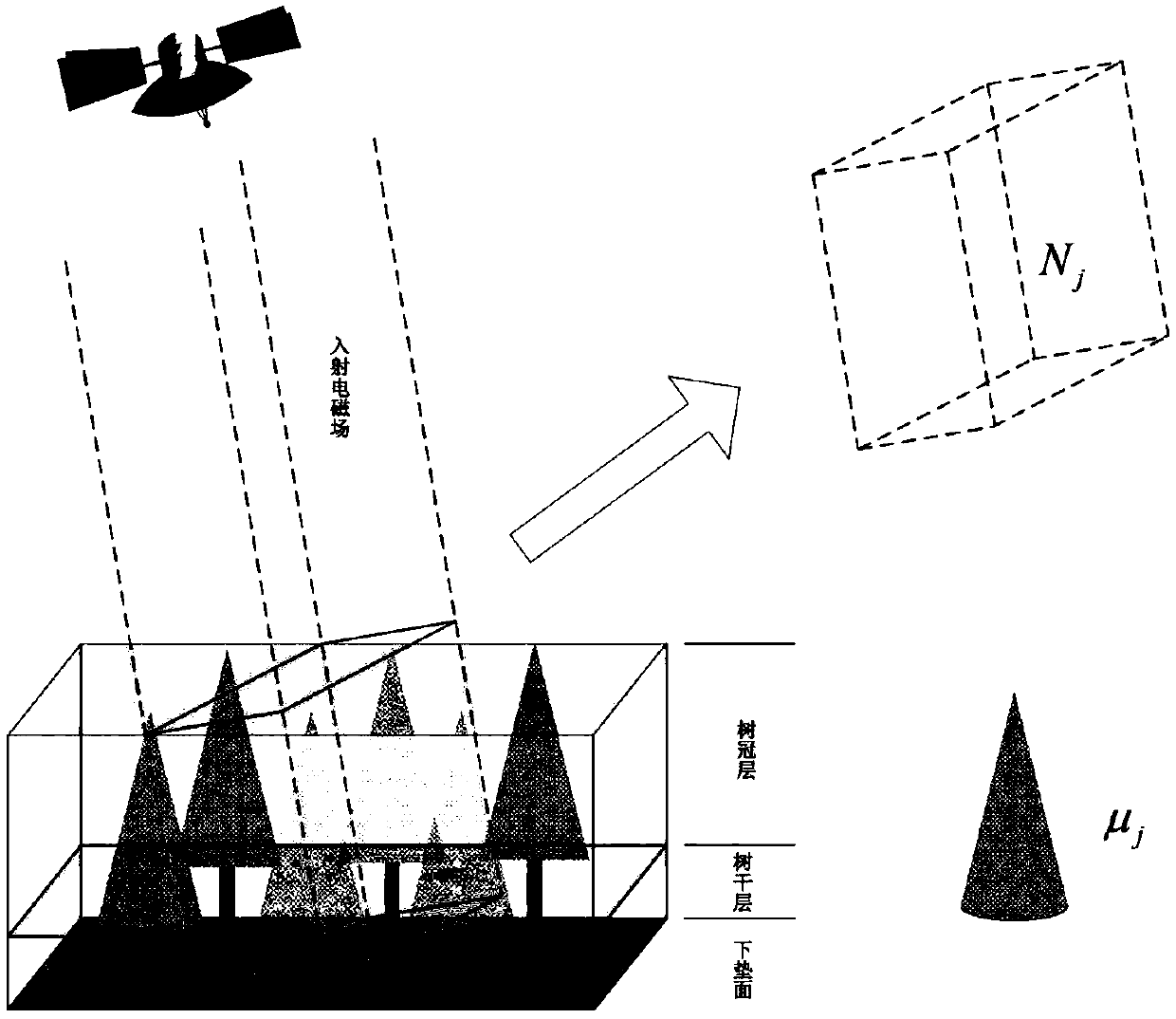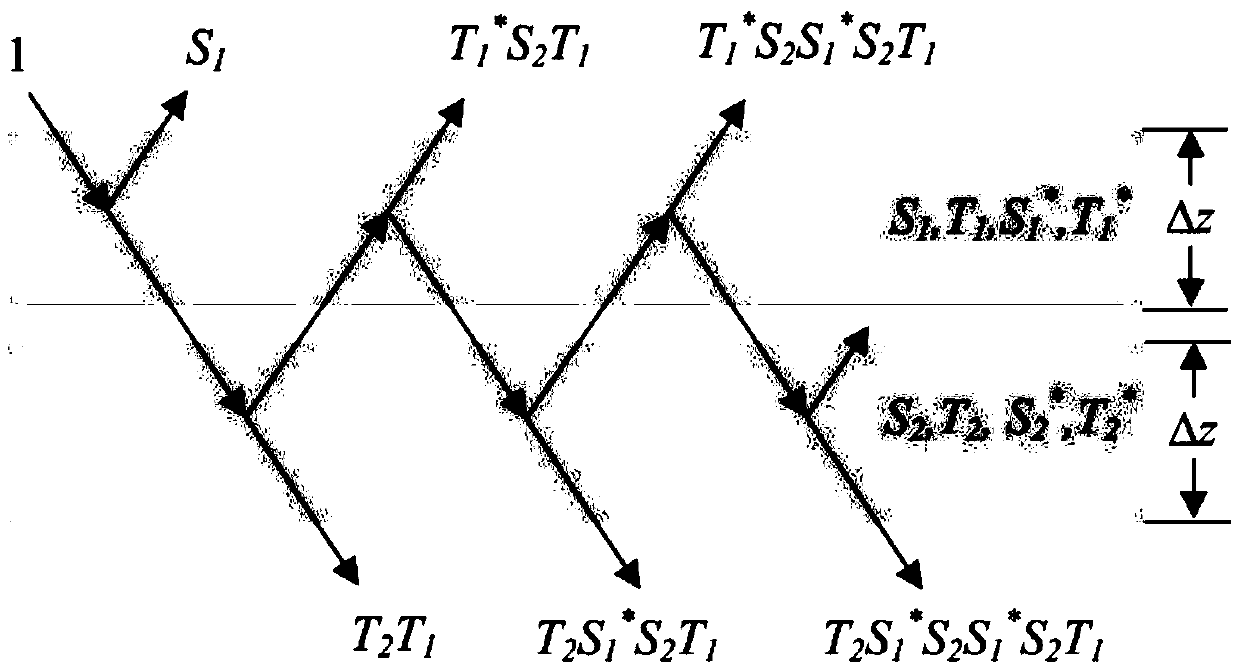Simulation method of vertical backscattering coefficient of non-uniform vegetation canopy in high orbit SAR
A technology of backscattering coefficient and vegetation canopy, applied in the field of vegetation radar remote sensing observation research, can solve the problems of limited theoretical analysis ability, inconvenience, and inability to explain the interaction mechanism between microwave electromagnetic waves and vegetation
- Summary
- Abstract
- Description
- Claims
- Application Information
AI Technical Summary
Problems solved by technology
Method used
Image
Examples
Embodiment Construction
[0026] see figure 1 As shown, the main steps of a high-orbit SAR vertical non-uniform vegetation canopy backscatter coefficient simulation method of the present invention include determining the type of vegetation canopy components, determining the vertical distribution function of the vegetation canopy component volume density, according to the determined The vertical distribution function calculates the thin-layer scattering matrix in the double-matrix algorithm, and calculates the backscatter coefficient of the vegetation canopy.
[0027] Specifically, firstly, the types of vegetation canopy components in the vegetation canopy are determined.
[0028] The vegetation canopy component refers to the smallest unit for calculating the scattering matrix in the discrete microwave scattering model, and the types include leaves, stems, branches, fruits, flowers, etc.
[0029] Secondly, determine the vertical distribution function of the first type of volume density of various types...
PUM
 Login to View More
Login to View More Abstract
Description
Claims
Application Information
 Login to View More
Login to View More - R&D
- Intellectual Property
- Life Sciences
- Materials
- Tech Scout
- Unparalleled Data Quality
- Higher Quality Content
- 60% Fewer Hallucinations
Browse by: Latest US Patents, China's latest patents, Technical Efficacy Thesaurus, Application Domain, Technology Topic, Popular Technical Reports.
© 2025 PatSnap. All rights reserved.Legal|Privacy policy|Modern Slavery Act Transparency Statement|Sitemap|About US| Contact US: help@patsnap.com



